Welcome, Educators!
Words Without Borders Campus brings eye-opening international literature to the high school and college classroom. Start browsing topics on the left, or watch the program in action in our four-minute video.

Welcome, Educators!
Words Without Borders Campus brings eye-opening international literature to the high school and college classroom. Start browsing topics on the left, or watch the program in action in our four-minute video.
Want to share your passion for teaching global literature with your colleagues? Is your school looking to expand its culturally responsive offerings? WWB Campus partners with schools and districts to provide impactful professional development, assistance with curricular updates, customized reading lists, and more.
To learn more about bringing these opportunities to your community of educators, fill out this short form.
To find readings, you can browse through large country-based collections or find literature from dozens of other parts of the world on our blog. Know exactly what you’re looking for? Search the site for a particular country, language, author, or translator.
After you click on a piece of literature from the homepage, country landing page, or Find page, it will appear on a new screen.
The story, poem, or essay will be on the left side of the screen. On the right side or beneath the literature, you can use the tabs to see bios, definitions, context (for instance, a video interview with the author, or a photo gallery of the place a poem is describing), teaching ideas, and ways to further explore the culture, author, or themes. There are also links to related reading at the bottom of the page.
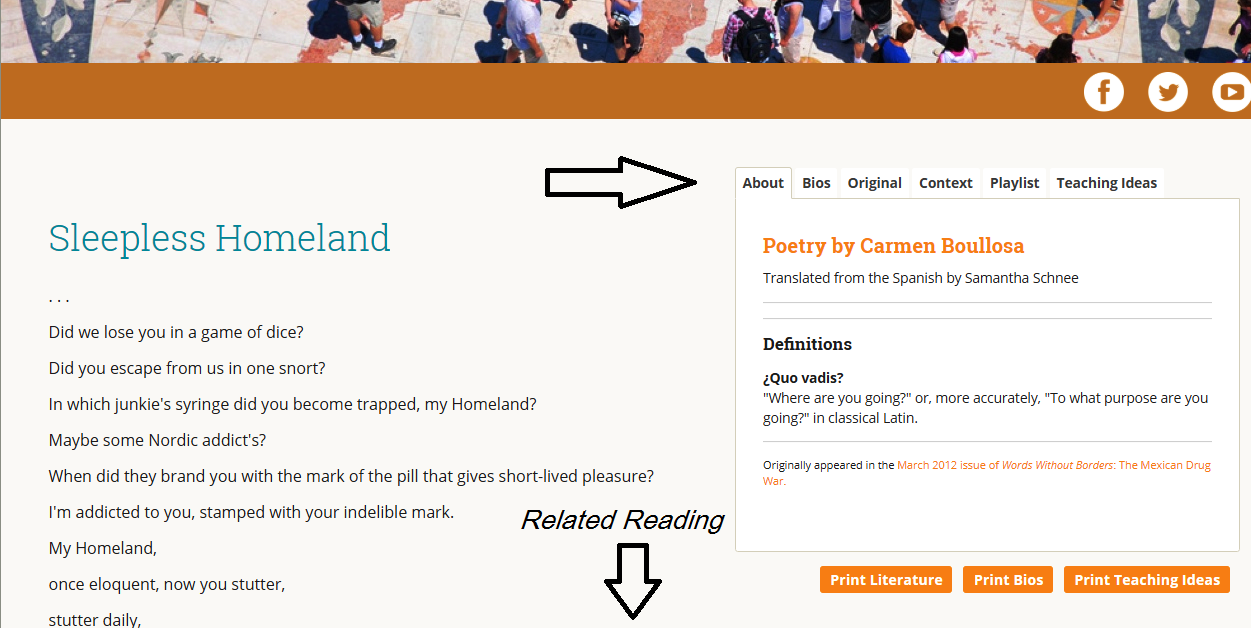
Beneath each work of literature, the "Related Reading" list describes comparable literature from the website.
You may be interested in finding a single poem or story—or in teaching a whole series of pieces from a particular country. This site is flexible, and provides tools for teaching pieces of literature individually or in groups. You can:
Many of the Teaching Ideas include ways of engaging students at the beginning of a lesson. Some general ideas are below:
1. Find a compelling idea, term or fact in the introductory essay for the unit, and put it on the board. (For instance, from Chip Rossetti's essay on Egypt: "Nahda": a renaissance.) Invite students to talk about the idea, term, or fact in relation to their own lives. (E.g., for "Nahda," "Have you ever begun to question an old way of thinking?")
2. Play students a piece of music or a video from the Context section, or show them a compelling image. Alternatively, before the lesson begins, you might assign different pieces of context to different students (or small groups), and ask them to prepare to present their pieces of context to the class.
3. Have a student who knows the original language of the piece to expressively read a few lines in that language. Ask the other students to use clues from the reading (emotional intonations, rhythms, etc.) to make some preliminary guesses about the nature of the piece.
You can access Teaching Ideas by clicking on the "Teaching Idea" tab on the right-hand side of the page for a piece of literature. Each idea can be used to construct a lesson plan, and often, you'll find a few different kinds of assignments (analytical as well as creative) within the same idea.
To see how an educator used WWB Campus Teaching Ideas to create a compelling lesson, watch a video featuring New York City educator Stephanie Chiu. (Discussion of Teaching Ideas around 9:40.)
Some of the Teaching Ideas include links to additional materials, such as artwork or audio files. Students can access those materials via links in the Context or Playlist tabs. The Teaching Ideas are also linked to the U.S. Common Core Anchor Standards for ELA.
You can find original-language works by searching with the keyword "bilingual" and/ or a particular language on Search the Site.
Some pieces are available in their original languages on WWB Campus—for example, Carmen Boullosa's poem "Sleepless Homeland" is available in Spanish via the "Original" tab.
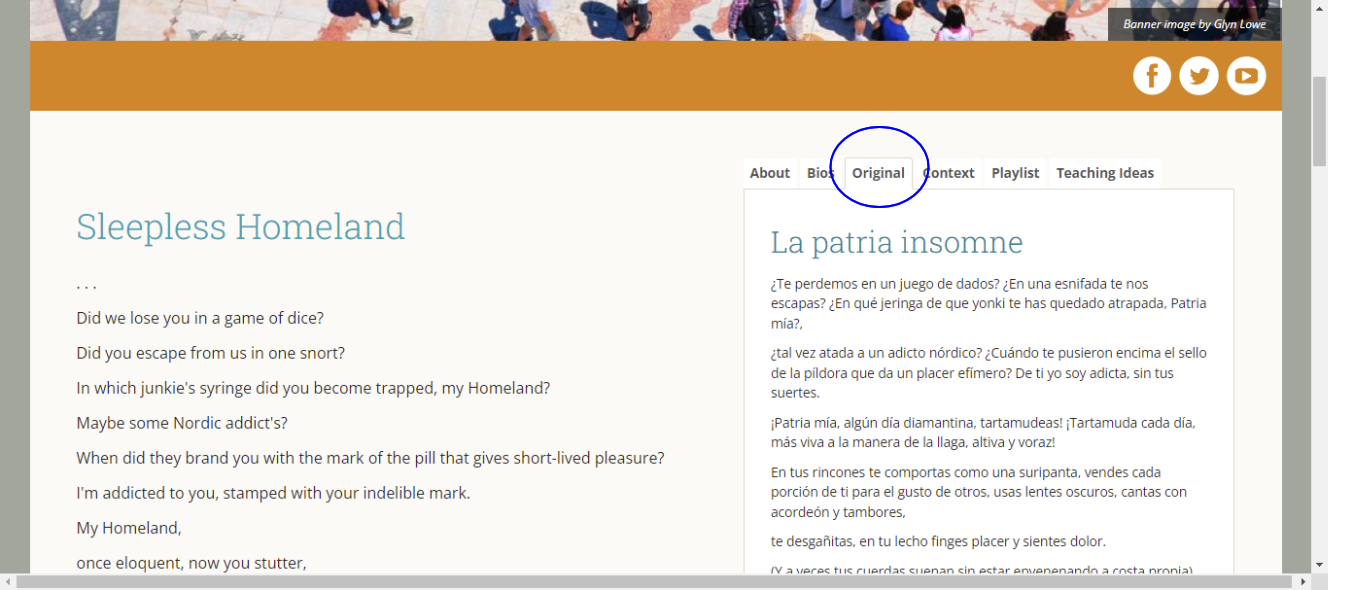
Other works have links to the original language versions towards the top of the "Context"; below, you'll see an example of a such a link for the Chinese poet Du Mu's "Poems for Parting."
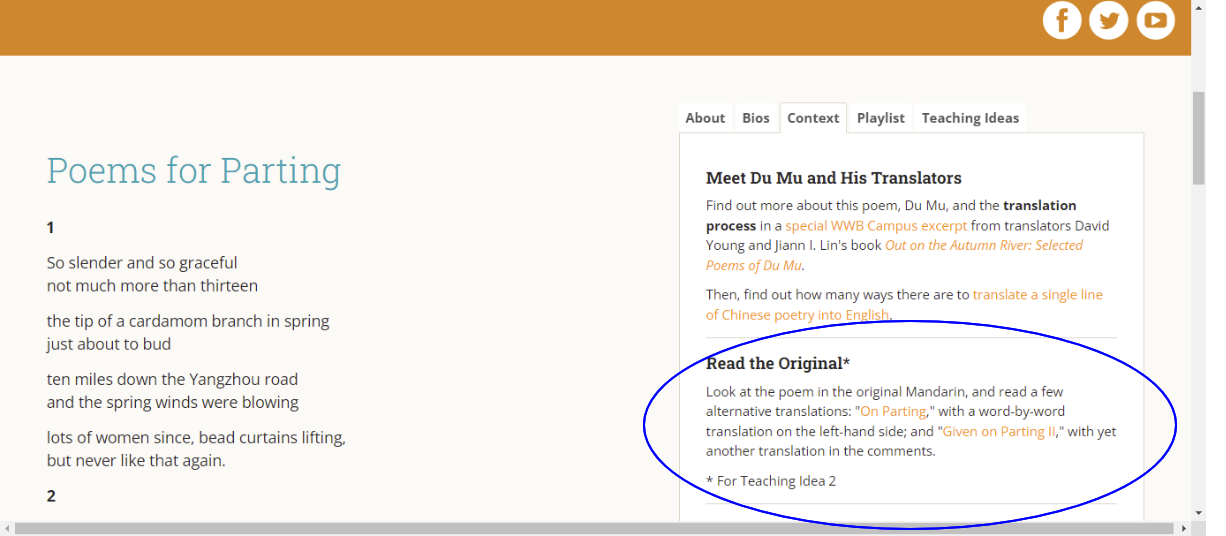
To share the original with students, use:
The Teaching Ideas tab or blog post for the piece of literature may include suggestions for teaching about its translation. If not, you can find general suggestions in these blog posts:
(If you're not sure about teaching translation, you might look at this post: Why Teach Translation?).
Sample lesson plans are posted for each country's literature on its landing page, which you can access from the top of the Find page.
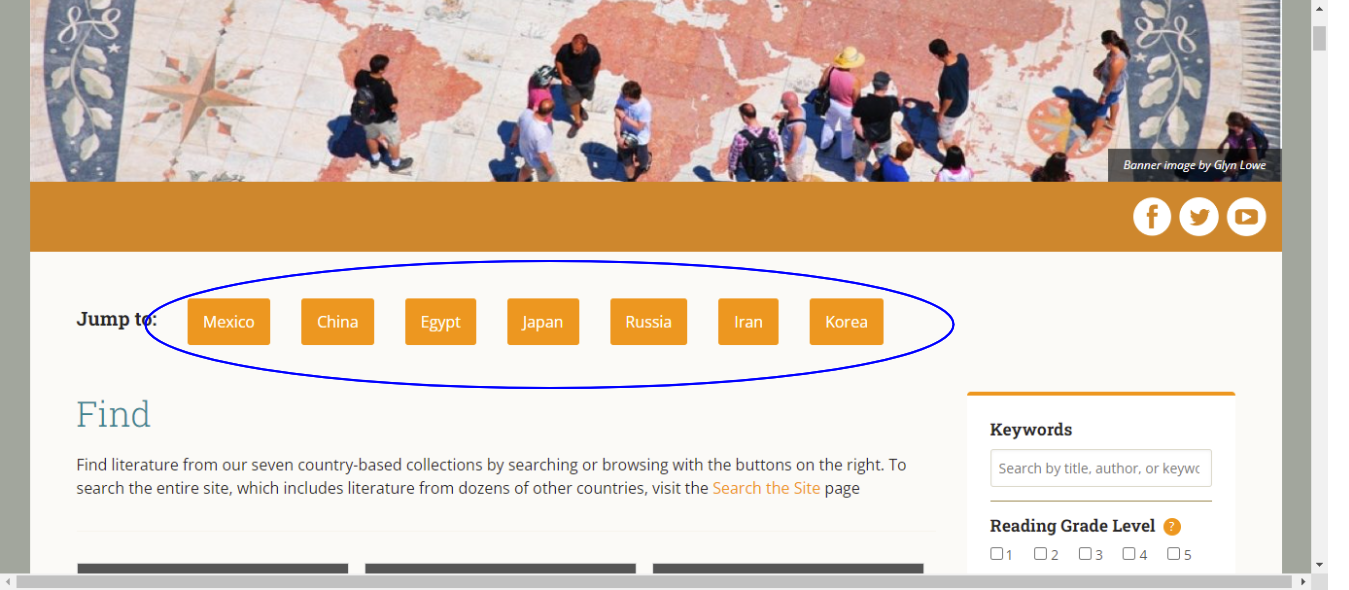
Sample lesson plans appear towards the bottom of the country's landing page, below the introduction to the country's literature.
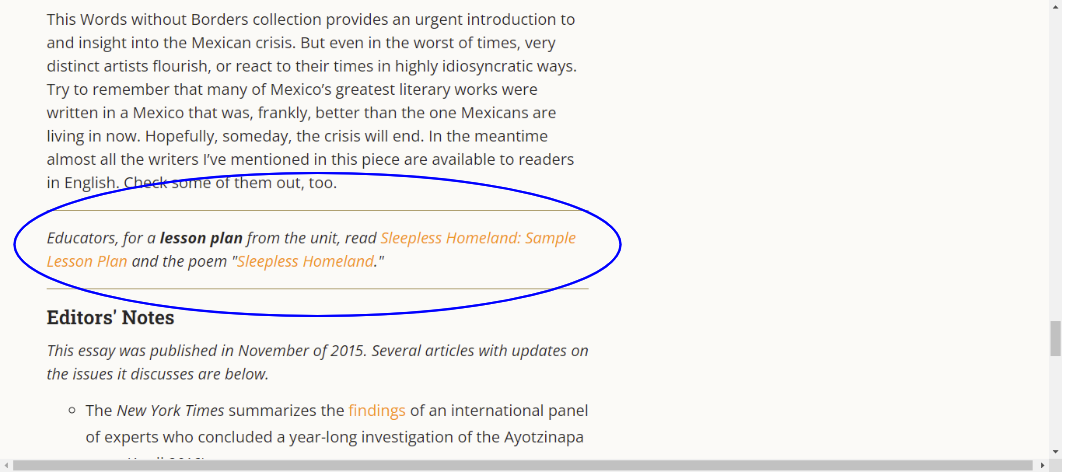
Links to a few sample lesson plans are below:
Are you and your students interested in connecting to classrooms in other parts of the world—perhaps reading manga with peers in Japan, sharing stories of migration with peers in Mexico, or discussing human rights with peers in Russia? This blog post includes a detailed list of virtual exchanges.
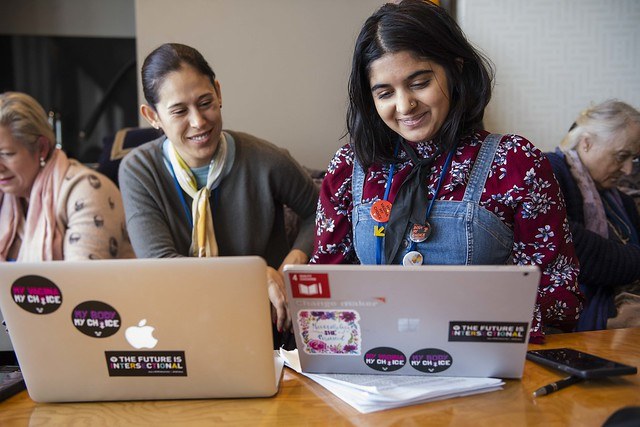
On the Find page, you can filter texts by their reading grade levels: the levels students need to be at in order to access the texts. For example, a tenth grader may be reading at an eighth grade level. Since all the literature featured on this site has multiple levels of meaning, we recommend searching for all the reading levels your students are able to access (e.g., for students at a fifth-grade level, search for grades 1-5.)
For teachers using lexiles, the chart below outlines approximate conversions.
| Reading Grade-Levels | Approximate Lexiles |
|---|---|
| 1 to 2 | 10L - 200L |
| 2 to 3 | 210L - 400L |
| 3 to 5 | 410L - 600L |
| 5 to 7 | 610L - 800L |
| 7 to 9 | 810L - 1000L |
| 9 to 11 | 1010L - 1200L |
| 11 to 12 | 1210L - 1400L |
| 12 and up | 1410L - 1600L |
Reading grade-levels don't always correspond to maturity levels: the Japanese comic "Tetsu of the Yamanote Line" is at a second and third grade reading level, but includes scenes of violence and is much better-suited to young adults than to elementary students. (In fact, this story is an excellent "hi-lo" text, likely to engage older students who are reading below grade-level.)
Other texts on this site are both written in simple language and appropriate for children, such as the inspiring Mexican poem "Nothing Remains Empty," by Juan Gregorio Regino. We recommend fully reading any text before using it in the classroom.
For middle and high school teachers in the U.S., we've listed which Common Core Reading and Writing Anchor Standards the different Teaching Ideas address.
Reading
Standards 1-10 are the nationwide Common Core Standards. In New York State, teachers have an additional Standard: #11:
Respond to literature by employing knowledge of literary language, textual features, and forms to read and comprehend, reflect upon, and interpret literary texts from a variety of genres and a wide spectrum of American and world cultures.
All the teaching ideas on this site support national Common Core Standard 10 (Read and comprehend complex literary and informational texts independently and proficiently) as well as NYS Standard 11. Most Teaching Ideas also address three or more of the other reading standards.
Writing
We've provided a variety of ideas for writing assignments, including analytical essays and creative responses. Most frequently, you will see that the assignments are supporting CCS Writing Standards 1, 3 and 4. However, if students develop the writing they begin in the suggested activity, then the assignments would support Standard 5 and possibly 6. And, of course, if students are routinely writing in response to site or in-class assignments, then the course is supporting Standard 10.
For more detailed information, take a look at a sample CCS-aligned lesson that incorporates WWB Campus material, and read about how to address the CCS with international literature.
The pieces of literature are of varying lengths, taking about ten minutes to forty minutes to read. We designed the website to be usable by teachers and students with different levels of Internet access and classroom practice. You can:
We want to hear from you! To tell us what you think of the site, suggest a resource, report an issue, ask a question, or provide another kind of feedback, write to us on the Contact page.